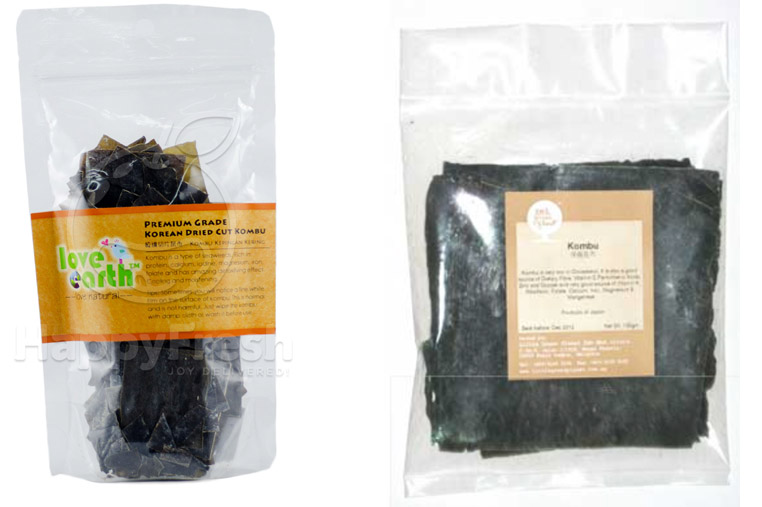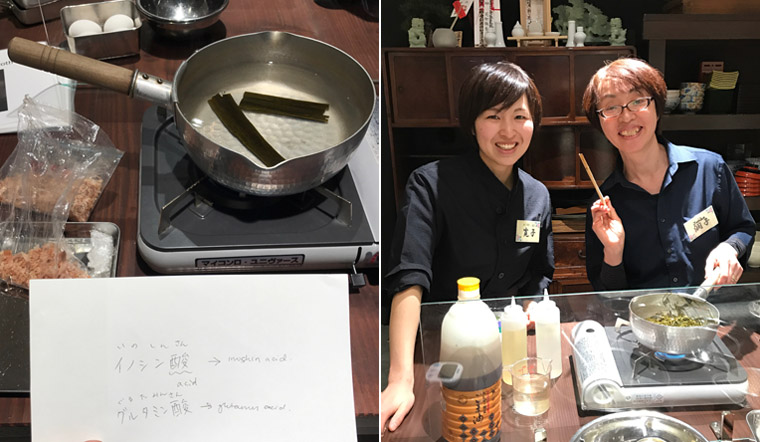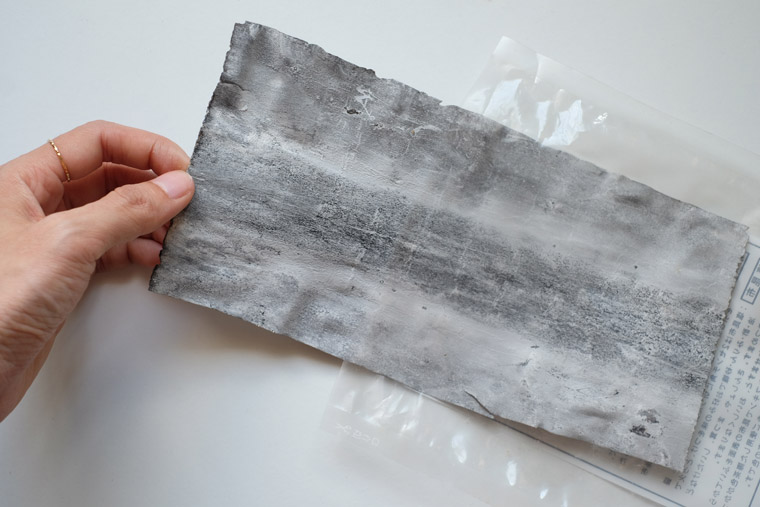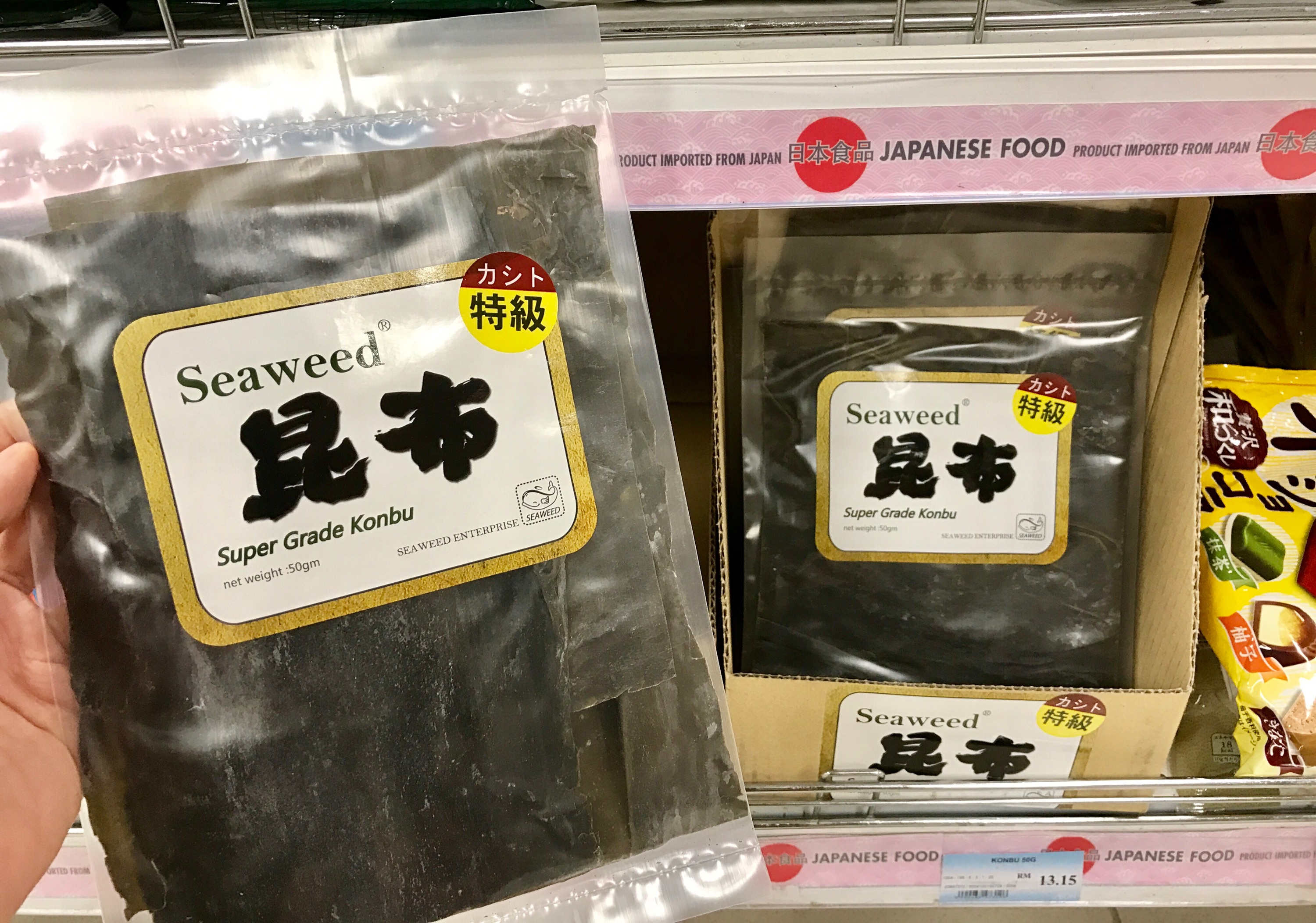Kelp, or known as kombu/ konbu in Japanese, is a type of seaweed. Its widely used in Japan to make a soup base called dashi (Recipe: Japanese Dashi Stock).
Taste & smell
Seaweed has the basic salty-savoury taste thanks to concentrated minerals and amino acid, especially glumatic acid (major component of MSG). It also contains fragments of highly unsaturated fatty acids (mainly aldehydes) that contribute to green-tea-like and fishy overtones (source: On Food & Cooking, Harold McGee).
Other names of kelp
- English name: Kelp
- Japanese name: Konbu / kombu(昆布)
- Chinese name: haidai (海带)
- Korean name: dasima
Where to buy
Kelp is not a local produce and it is not available at all supermarkets. Get it from supermarkets which provides international produce e.g Jusco at the Japanese section or health food stores.

Korean Dried Cut Kombu from Village Grocer (RM 12.60/ 60 g) and Kombu from Planet Organics (RM 9.10/ 13o g)
How to extract more flavour from kombu
When I was attending a cooking class in Tokyo, Hiroko sensei warned me not to wash the kombu as it will remove the seaweed’s natural umami flavour. To preserve and extract the most umami flavour from kombu:
- Cook gently Do not boil kombu at high heat. Instead, cook it below boiling point.
- Wipe instead of rinse. Instead of rinsing kombu under running water, wipe it with a damp cloth instead
- Cut into smaller pieces. Cut kombu into smaller pieces, or score it with a knife to release substances from within.

What is the best way to cook kombu
Unlike bone broth, kelp does not benefit from long cooking; prolonged cooking in liquid will accentuate fishy aromas. Hence, its best to cook seaweed only gently.
- Start cooking kelp in cold water
- Hold it below boil for an hour
- Remove kombu to leave behind its savoury soluble minerals and amino acids.
Storage
Store in a dark and dry place. Keep it in an airtight container or ziplock bag. I thought my kelp has gone bad as it has white powder on the surface. According to Maangchi, there’s nothing to worry about and the white powder will make it more delicious.


